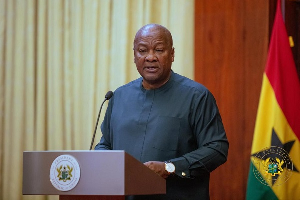The 2017/2018 Multiple Indicator Cluster Survey (MICS) report contained in a Ghana Statistical Service Survey put the national child marriage prevalence rate at 19 percent, an improvement on the previous MICS that was 25.9 percent in 2006 and 27 percent in 2011.
Survey
During the 2014 Ghana Demographic and Health Survey, it came out that approximately 260,000 girls were affected in the country.
Crying uncontrollably, 12-year-old Raffia Tijani, ahead potter at the Agbogbloshie Market in Accra, told the Daily Graphic that it only dawned on her that she had become a victim of child marriage when the man she had been sent to go and live with so she could go to school under the excuse of proximity, asked that she had sexual intercourse with him.
“When I refused, he forcefully had his way with me and when I reported to my parents, they consoled me and encouraged me to give in to him without giving me any explanation,” she said.
Raffia recounted with pain and bitterness against her parents, how they, knowing how passionate she was about becoming a midwife, deceptively married her off without her consent to the 60-year-old man who already had two elderly wives and eight children, some of whom were even older than she was.
“When I realised that my supposed uncle had paid my bride price and my parents were not helping matters, I gave up the fight and started embracing my new role as a child wife.
Soon I got pregnant and at age 17, I had three female children my husband and I could hardly take care off,” she said.
“When I heard about some friends of mine who had escaped similar situations were in Accra and Kumasi to find greener pastures, I stole my husband’s money and ran away to Accra in search of freedom and greener pastures too,” she said.
She said it had been three years since she came to Accra and she had not been able to go back to school, neither did she know how her children were faring but she said life as a head potter, under all the harsh conditions such as sleeping outside, was preferred to a life as a child-wife and mother.
Another victim, Ms Ilhaam Ibrahim, 17, said she ran away from being married off to a man old enough to be her father. She said she was asked to go and live with him and she agreed, not knowing her aunty had received her bride price from him without her knowledge.
These are but just a couple of the stories of the hundreds of girls who are unable to maximize their potential by becoming victims of child marriage.
National/global situation
Child marriage is an informal union in which either one of the parties or both are children under the age of 18 at the time of union.
The Children’s Act of Ghana, Act 560 (1998), defines a child as a person below the age of 18 and describes child marriage as an informal union in which one or both parties involved are below the age of 18.
The rising statistics on the issue demonstrates that the country went to sleep after being the first sovereign nation in Africa to rectify the International Convention on the Rights of the Child.
The Convention, spearheaded by the United Nations (UN), is a human rights treaty which sets out the civil, political, economic, social, health and cultural rights of children. It was adopted on November 20, 1989.
Stakeholders are of the opinion that child marriages in the country are not a function of culture, but rather poverty and lack of education.
Despite efforts nationally to curtail this phenomenon, child marriage prevalence is still increasing.
Statistics available at the Ministry of Gender, Children and Social Protection indicate that one out of five girls in Ghana is married before her 18th birthday.
UN SDG 5
Recognising that children are not able to fully and freely consent to marriage, child marriage has been categorized by the United Nations as a violation of human rights which puts girls at risk for early pregnancy, spousal abuse, fistula, unsafe abortions and other vulnerabilities.
In particular, the United Nations moved to adopt the elimination of child marriage as part of its gender equality goal within the 2030 Sustainable Development Goals (SDG) framework, under Target 5.3 which advocates the elimination of all harmful practices, such as child, early and forced marriage and female genital mutilation.
With these goals in mind, UNICEF and the United Nations Population Fund (UNFPA) initiated the “Global Programme to Accelerate Action to End Child Marriage”
UNFPA’s Country Representative, Mr Niyi Ojuolape, said the global programme aimed to ensure that all girls fully enjoyed their childhood free from the risk of marriage among other objectives.
Opinions of Monday, 14 October 2019
Columnist: Doreen Andoh



















